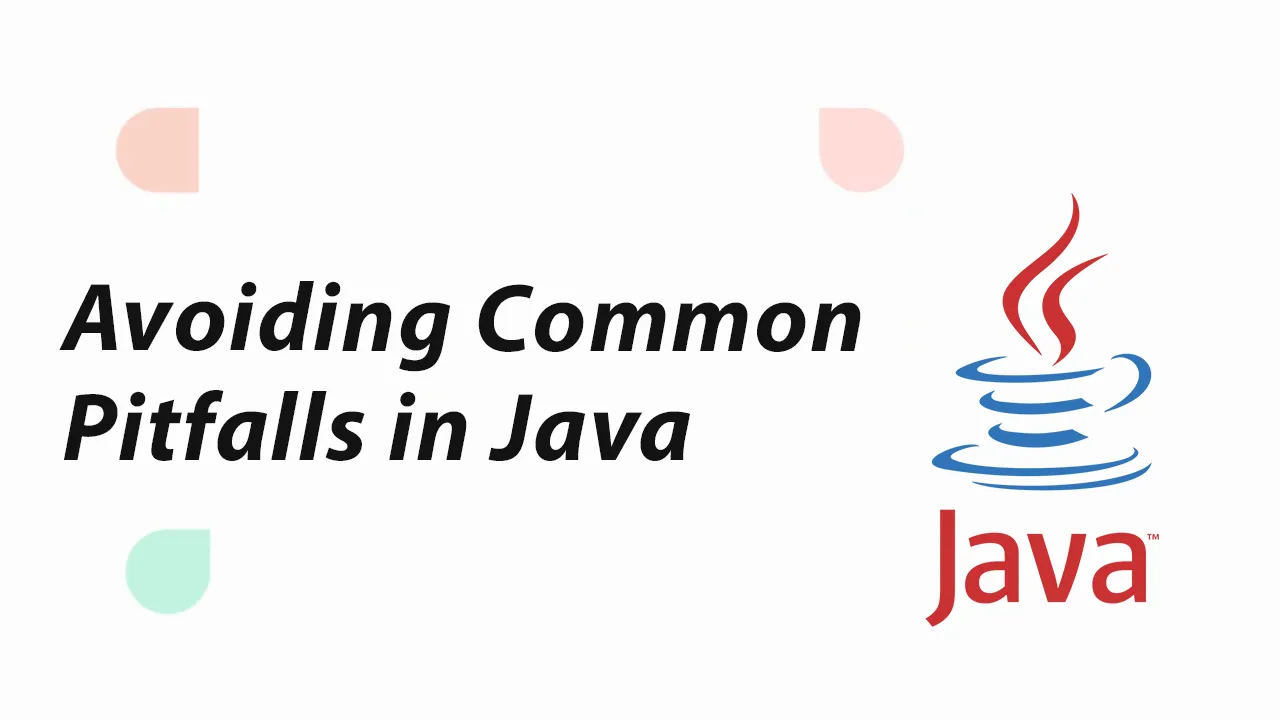Avoiding Common Pitfalls in Java
In this Java tutorial, we will learn about Avoiding Pitfalls With Java Optional: Common Mistakes and How To Fix Them. Learn how to avoid traps with Java Optional and how to use it efficiently by taking the best of this API to make a readable code.
Java's Optional API is a valuable tool for developers to mitigate null pointer exceptions and create more resilient code. However, despite its benefits, Optional can still lead to mistakes if not used correctly.
This article will explore the common pitfalls of Java Optional and provide solutions to overcome them. By understanding these pitfalls and knowing how to avoid them, you will be able to harness the full power of Optional in your Java projects and write more reliable code.
One common mistake when working with Optional is mishandling empty Optionals. An empty Optional signifies the absence of a value, and it requires careful handling to prevent unexpected behaviors.
Developers sometimes make the error of using get() on an empty Optional, which throws a NoSuchElementException. It is essential to check the presence of a value before retrieving it using a method like ifPresent().
Another mistake is misusing Optional and treating it as a replacement for conditional statements. Although Optional provides convenient methods like orElse() and orElseGet() to handle the absence of a value, using them excessively can lead to less readable code. It is important to remember that Optional is not intended to replace traditional if-else statements. Instead, it should be used when the absence of a value is a valid and expected outcome.
A common anti-pattern associated with Optional is the abuse of method chaining. While Optional supports method chaining, it is crucial to exercise restraint and avoid excessive nesting of operations. Overcomplicating the code with multiple method calls can make it difficult to understand and maintain. Keeping the chain of operations concise and readable is advisable by breaking it into separate steps or utilizing intermediary variables.
To avoid these pitfalls, it is recommended to follow some best practices when working with Optional. Firstly, I prefer using Optional as a method return type rather than using it as a field in a class. It helps to communicate to callers that a value may or may not be present.
Secondly, use Optional in combination with functional programming constructs like map(), flatMap(), and filter() to perform operations on the wrapped value. It promotes a more practical and declarative coding style.
Additionally, be cautious when using Optional in collections. While Optional can be used as a container for elements in a collection, it is generally advised to use it sparingly and only when necessary. Overusing Optional in collections can lead to increased complexity and decreased performance.
In conclusion, Java Optional is a powerful feature that aids in writing robust code by addressing null pointer exceptions. You can effectively leverage Optional's benefits by handling empty Optionals correctly, using Optional judiciously, and avoiding anti-patterns. However, it is crucial to understand and avoid the common pitfalls associated with its usage. With this knowledge, you can confidently utilize Java Optional without falling into the traps and become a proficient engineer. Adhering to best practices such as preferring Optional as a method return type and using functional programming constructs will enhance the readability and maintainability of your code.
Video
Article source: https://dzone.com
